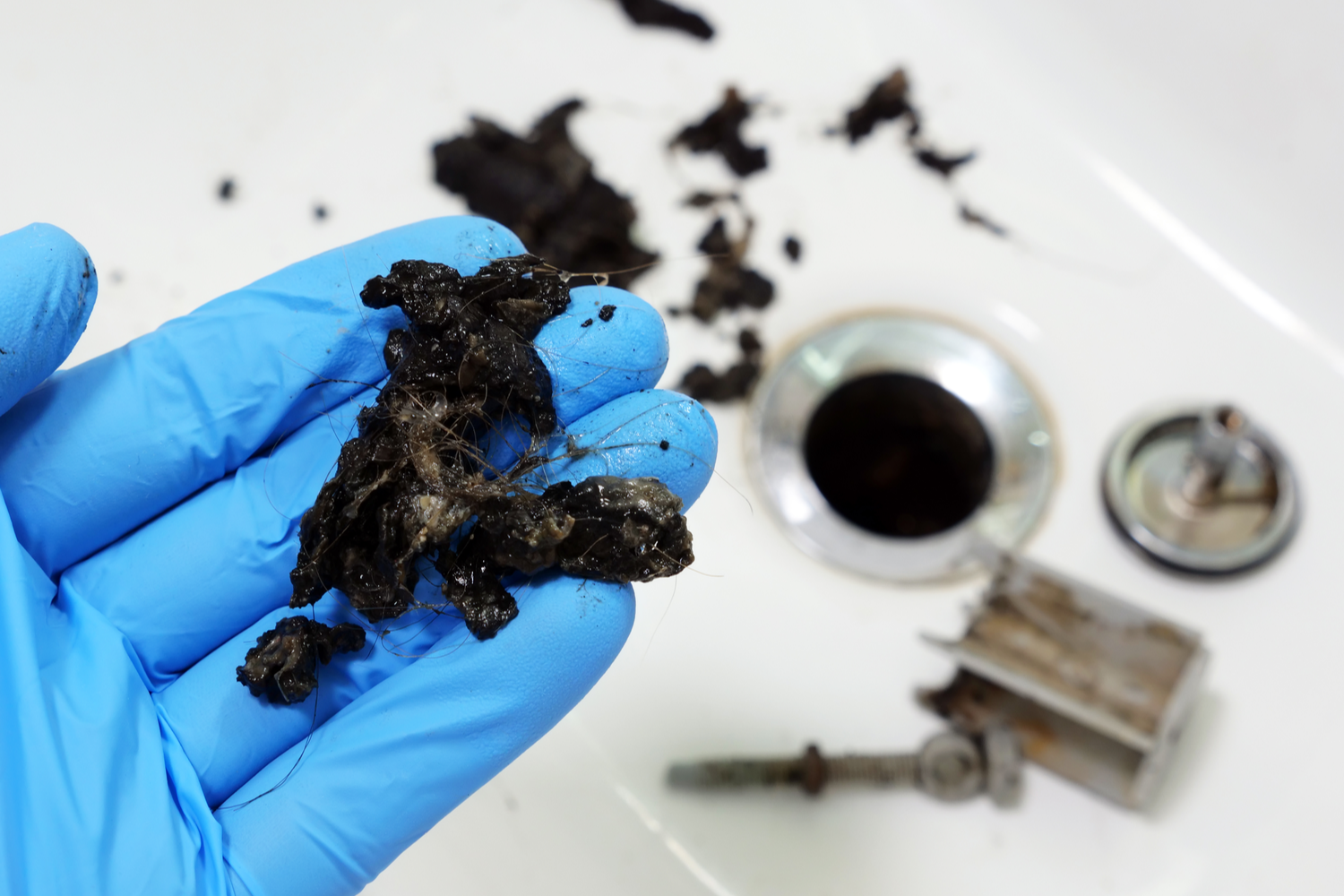Water refuses to drain out of your sink or does so much slower than it used to. Obviously there must be a clog. The sink is either completely clogged (standing water) or at least partially clogged (draining very slowly). The question is how do you unclog a sink?
First, understand that there are several reasons that any sink could develop a clog.
The most common culprits are:
- Hair
- Food
- Hair Products
- Fats or Oils
- Coffee grounds
- Small objects
The location of the sink that is clogged determines how to go about resolving the issue. Is it a kitchen sink, a bathroom sink, or maybe a laundry/utility sink? Let’s explore the different possibilities and ways to unclog that particular sink.
Kitchen Sink Clogs
Most clogs in kitchen sinks are caused by food or grease from cooking. Most sinks have a P-trap, called that because that is how the pipe is shaped, to catch larger items and keep them from reaching the remainder of the pipes in your plumbing system. Over time, bits of food and debris collect in this P-trap and a clog can form as a result. Always start by removing as much of any standing water as possible.
One way to attempt to remove this type of clog is to use an environmentally friendly approach by using a drain cleaner that contains bacteria and enzymes. Try to avoid using harsh chemicals that can cause damage to your plumbing and shouldn’t be kept in the home where small children and pets may get into them.
A second natural remedy is to use products that you more than likely already have in your home. Pour ½ cup of baking soda into the drain and follow that up with ½ cup of vinegar or lemon juice (use lemon juice if the smell of vinegar is offensive to you, lemon juice just costs more). Place a cover over the drain and allow the combination to dwell for about one hour. After one hour, pour a pot of boiling water down the drain. Sometimes this entire process needs to be repeated.
A third method would be to use a wire coat hanger or a drain snake tool. With the coat hanger, use pliers to bend the tip into a small hook shape. Slide the hanger down the drain. When the blockage is felt, twist the coat hanger and gently move it in an up and down motion. If you think you have removed or loosened the clog, run some water down the drain to see if the problem has been solved. A drain snake
works in much the same manner. One end of the snake has an auger on it that can be inserted into the drain, the other end has a crank that can be turned to rotate the auger and hopefully break the clog loose. As with the coat hanger, you should run water down the drain to ensure that the clog has been cleared.
Bathroom Sink Clogs
Hair, personal hygiene products, and soap scum are the usual culprits in creating a clog in a bathroom sink. As with a kitchen sink clog, remove as much standing water as possible first. Once the standing water is removed, boil a pot of water and slowly pour it down the drain. This should do the trick fairly quickly but if it doesn’t work the first time, repeat the process.
If the clog still is present after the boiling water, try the baking soda/ vinegar/lemon juice method described above. Remember to plug the drain with a stopper or a towel and wait at least ½ hour before running hot water down the drain
Using a Plunger on Sink Clogs
You probably already have a small plunger around your home. If you are working on a bathroom sink rather than a kitchen sink, you need to first remove the stopper assembly. Usually if you pull up and twist the stopper to the left it will disengage be able to be removed. Cover the drain with just a few inches of water. Do not fill the sink to avoid sloshing the water out as you use the plunger. Center the plunger over the drain and pump it up and down for about 15 seconds. Remove the plunger to see if the water drains out quickly. Test your results by running water into the sink. Care must be used when using a plunger; too much force can cause the pipe connections to separate.
Items to NEVER Put Down a Sink
In this hurry-up world it may be tempting to dump any old thing down a sink to just be done with it. Take an extra minute and avoid a sink clog headache by never putting these items down a sink:
- Oils, fats, or grease of any type
- Coffee grinds
- Large pieces of leftover food
- Condoms or feminine hygiene products
- Cat litter (manufacturers may claim theirs is flushable, don’t buy into it)
- Eggshells
- Solvents or paints
- Prescriptions/ Medications
- Acidic or corrosive compounds
- Produce labels/stickers
Water Damage as a Result of Clogged Sinks
If your sink has clogged and allowed water to damage your home, you probably will need the help of a professional water restoration company like Water Mold Fire Restoration. When wet cabinets, walls, or flooring are left to dry on their own, you risk the possibility that mold may develop. Mold can begin to grow in as little as 24 hours, depending on the specific conditions of what may have gotten wet. Our emergency water damage specialists are available 24/7 to respond to any type of water damage in your home. Contact us at 800-905-0277, or email us at help@watermoldfire.net.








